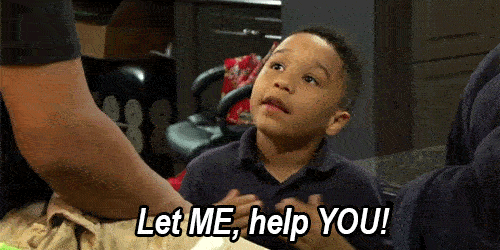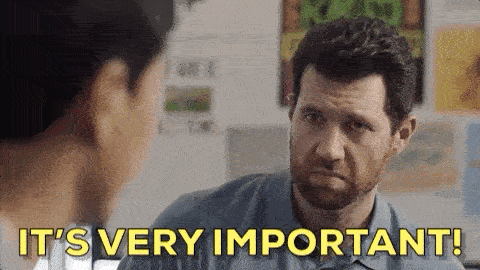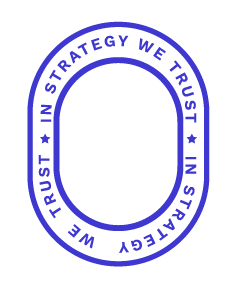
Communication, Public Relations, Strategy
Did you participate in fire drills at school? If the fire alarm goes off in your building – do you know what to do? We prepare for that danger, but it’s important to be ready for whatever crisis may come.
Weather, world events, technical difficulties, and yes, even global pandemics throw a wrench in our lives. And for businesses, these events can put the brakes on everything. And while you are scrambling to problem-solve, your customers or clients are contacting you for information and updates.
You need a plan. You don’t wait until you’re in the middle of the fire to talk about what should be done. There’s no need to wait until a crisis hits to scramble for ways to communicate.
When an ice storm hits, and you need to close or cancel appointments – how will your patrons be notified? If a negative tweet about your organization goes viral – how can you respond in a way that won’t add flame to the fire? What happens if your Internet, power, or water goes out? Or of your systems are hacked and your customers’ private data is breached?
This might cause you to feel slightly panicked about the future, rest assured there is really no need to freak out. You’ve got this! Especially if you have a good crisis communication plan. When there is an issue, there are a few questions that your crisis communication plan can help answer:
Who Will Communicate?
Sometimes when a crisis is happening, leaders can feel like they are being pulled in a million directions. Plagued with solving the problem at hand while communicating to employees, clients, and the community can be daunting.
And like a game of telephone that we played as kids, a message can get confused when it comes through many different sources. Having a communication plan prepares you to designate someone to speak to the public, respond to phone calls, and manage social media while you work to come up with solutions and resolve the crisis.
Knowing ahead of time who you can trust to show grace under pressure and get accurate and timely information goes a long way. Someone who is proactive and not reactive when it comes to crisis communication can help save your business’ reputation.
The old adage tells us that if you can’t say something nice, don’t say anything at all. But when your business is in crisis and you can’t afford to keep quiet, having someone who may communicate impulsively can do a lot of damage. Waiting until a crisis occurs to find the right person for the job is not the best idea for such a critical role.
How Will They Communicate?
Figuring out who will get your messages out is half the battle. Most businesses wait until they are in the middle of a situation to decide how they are going to notify their community of what is happening. But in a crisis, not all your communication methods may be functioning.
Here are some issues to consider:
- How will you communicate if you are without power or Internet access?
- If you normally send people to your website for the latest information – what happens if you cannot get ahold of your web content manager during the crisis? What if their updates take 24 hours to publish and your clients need current information?
- If you have someone else doing your social media – do you have access to the accounts in case they are unavailable for updates?
- Do you have a paper list with the contact information for key stakeholders in your business that you may need to access if you can’t get online?
- Can you direct all your clients to one website or social media page for updates?
Having a crisis communication plan helps you answer most of these questions ahead of time, and that your entire team will know what to do when it happens.
What Will They Communicate
Even if you assign a person to handle your communications during a crisis, you will still need to have a plan in place for how they will have the latest information approved by you. Information can change by the minute sometimes, and you want to make sure you are not passing along a message only to have to change it five minutes later.
Who signs off on communications before it is sent? Do you have a regular update schedule, so your clients, customers, or employees don’t go for too long without information?
With a proper crisis communication plan, you and your team will be able to handle whatever crisis comes your way without panicking. While it seems like extra work now, it will save you time later if it is needed.
If you need help with any of this – strategy, planning, or training please contact us. We would be happy to have a consultation with you to discuss your needs and budget and find a solution that will work for you and your team.
by mollymason | June 27, 2016 | Marketing, Strategy | 0 Comments
Let’s pretend it’s a warm, sunny day and we’re running a lemonade stand. You walk by, purchase a cup, and declare “Wow! That is some seriously good lemonade. What do you guys do so different?” Truthfully, a recipe isn’t that hard to follow: proper portions of water,...
by mollymason | June 27, 2016 | Marketing, Strategy | 0 Comments
Let’s pretend it’s a warm, sunny day and we’re running a lemonade stand. You walk by, purchase a cup, and declare “Wow! That is some seriously good lemonade. What do you guys do so different?” Truthfully, a recipe isn’t that hard to follow: proper portions of water,...

Communication, Events, Marketing
We are all adjusting to the new normal. New procedures in the office, remote work, masks, and social distancing – the list goes on. Many of us are just returning to work now after being furloughed or laid off during the stay-at-home orders.
As the dust clears, we try to predict what the remainder of the year will look like and attempt to adjust our budgets for 2021. While much remains unclear, we know that it will not be business as usual.
If the majority of your sales leads came from networking at conferences, speaking engagements, or trade show booths, your future sales pipeline is going to be experiencing some difficulties as your leads dry up.
So, how can you generate leads when everything gets canceled? Event planners are doing their best – creating virtual booths and networking events – but it just isn’t the same. How can you fill that pipeline? It is hard to transition from outbound marketing (where you physically go out and collect leads) to inbound marketing (where the leads flow into your pipeline), but don’t worry, we have some ideas:
1. Change Your Website
If your sales and marketing process previously focused on building relationships, your website tone was probably on the passive side. Take a hard look at your website – does it sell? You will need to adjust to an active voice and include multiple calls to action.
2. What is Your Target Audience Searching For?
Your target audience is searching for different things than they were six months ago before the pandemic began. Take some time to investigate search phrases for your industry, target market, and location. The next step is to optimize your content so that you are capturing the organic searches in your industry. Then you can work on paid search ads to help you get featured at the top of the list.
3. Share Your Knowledge
If you are asked to give presentations at these trade shows, don’t keep the expertise to yourself. Your industry still needs to learn and grow during these trying times, it just needs to happen remotely. Consider hosting consistent webinars or training sessions. Not only are these a great digital lead generator that you can advertise, but your target customers will see you as an expert in your field. This builds trust.
4. Create More Content
With the time saved on travel to these canceled events, employ your staff to create more content. Training videos, demonstrations, blogs, how-to articles, white papers, and case studies are all items that should be in production right now by all staff members – customer support, engineering, and sales staff. This exchange of knowledge cannot happen in person at these events, but it can happen digitally.
5. Nurture Your Leads
Your new leads are going to look a little different than the ones you would get from the conference floor. You know, the one who did a product demo in a booth and had the budget conversation with your sales team. They are going to take a little more nurturing to move them through your pipeline.
Don’t get discouraged. Change is always hard, especially if your team has been doing things the “old way” for a long time. If you look at this as an opportunity, however, you may be surprised at what you can discover as you go through this process. You may find opportunities for efficiency that weren’t there before. As you shift your marketing dollars, you may find your new digital efforts give you a higher return on investment than these trades shows did in the past.
Branding, Communication, Marketing, Strategy
Have you noticed an uptick in messages about self-love and acceptance these days? You know, the messages encouraging you to embrace who you are and what makes you different; to really own it. It’s a nice way of saying quit trying to be someone you’re not! In marketing, as we continue to work on personifying brands, it’s not a stretch to carry over that mentality.
Are you owning your brand or struggling in the identity department? Let’s do a little self-diagnosis.
Here are three signs you have a brand identity problem:
Your answer to “What do you stand for?” changes depending on who is asking.
You make marketing decisions based on what’s trendy rather than brand strategy.
You have a lukewarm relationship with your target audience.
If any of these questions strike a chord, it’s time to go back to basics with your brand. It’s not an insult or a sign of weakness; major brands regularly revisit their strategy to evaluate and adjust for maximum effect. This will get you back on track and ahead of those who are too proud to admit they have a problem.
There are many more elements to building up a wow factor, but these are the ingredients for a strong foundation.
Brands, like people, grow and develop over time. They need constant assessment to understand what they stand for over the years or else they will become outdated and unrelatable.
- Be sure of your values and target audience, and be mindful of just how those two things overlap.
- Understand the needs of your audience and how they wish to be reached.
- Present yourself consistently in terms of messaging and frequency.
Make your Marque
What happens when you get to the point where you own your brand? You aren’t hiding behind anything and you aren’t trying to imitate others. You are no longer worried about pleasing every person on the planet, because you know that is just not going to happen. (Really, it’s not.) Instead, you know that by owning your brand, you’ll attract people that value what you value.
Communication, Marketing, Networking
 When freshly graduated college students leave their campus nests, they often have the desire to spread their wings and move to a big city such as New York or Los Angeles. Their “take over the world” mentality is inspiring to say the least, but could be arguably more effective when implemented in a smaller area.
When freshly graduated college students leave their campus nests, they often have the desire to spread their wings and move to a big city such as New York or Los Angeles. Their “take over the world” mentality is inspiring to say the least, but could be arguably more effective when implemented in a smaller area.
The cities with a little less glam (and a lot less traffic) are increasing their share of these valuable college grads at a much higher rate than the New Yorks of the world, ultimately creating a desirable working environment.
Draw What You See, Write What You Know
 Contrary to what some people believe, working in the area that you grew up in or studied in can be extremely beneficial. Knowing the strengths and weaknesses of your region is a major advantage when entering the workforce.
Contrary to what some people believe, working in the area that you grew up in or studied in can be extremely beneficial. Knowing the strengths and weaknesses of your region is a major advantage when entering the workforce.
There are plenty of unique opportunities that might not be as obvious to those accustomed to the anonymity of a big city. Specifically, in a smaller city, it’s often easier to create meaningful connections with other businesses and higher-ups.
Whether you are familiar with the industries in your area or not, it is crucial to know who you’re working with and who you’re up against. Familiarizing yourself with other businesses provides you with the opportunity to learn from what others do. This helps with the implementation of new ideas into your company’s strategy.
Success in an industry often comes down to who you know, and the tighter-knit communities allow for those successes to happen at a faster pace.
Live, Work, Play – Lenawee County
Lenawee County, while significantly smaller than New York, is known for its great educational opportunities, natural beauty, and diverse communities. Though it might be a cliché, it truly is a great place to live, work, and play.
The four exceptional post-secondary schools housed in Lenawee County allow for businesses to pull from the best of the best. As graduates leave their nests they take their knowledge and directly apply it to their career. Regardless of the time spent at these institutions, students have established networks that are bursting at the seams with potential.
Hoyden, Why Adrian?
Starting a business in Adrian was a no-brainer for cofounders Sarah Stanley and Molly Mason. Aside from being the only marketing and design agency in the area, the constant support for entrepreneurs from community members, municipality leaders, and other business owners is like no other. CEO, Sarah Stanley, had this to say, “Adrian is a small town eager to do big things. Knowing the attitude toward entrepreneurship, attracting young professionals, and filling gaps in service offerings just reassured our decision to locate here. We have received tremendous support and encouragement that have helped build the foundation of our business and are excited to be coming in at the time of Downtown Adrian’s revitalization effort. Adrian is home for us.”
Due to its recent development, more and more young professionals are moving to Adrian to begin their career. Creative Director, Alex Bourget, relocated from Washtenaw County to pursue her skills as a graphic designer for HCG and couldn’t be happier. “Working in Adrian has allowed me to become more involved with the community and local government. I feel as though I am able to get more accomplished here than I have anywhere else.”
The city’s leaders are dedicated to helping new businesses get started and flourish, and fellow businesses treat your growth as though it’s their own. Quite simply, Adrian provides a plethora of resources, talent, opportunities, and community involvement; the perfect recipe for a successful business.
Branding, Communication, Public Relations

Imagine that you’re taking your child to their first driving lesson, and out of nowhere, a car cuts you off and the driver is yelling at you. A few moments later, you pull up to the driving school to see the same person is now your child’s driving instructor. More than likely, you would take your child somewhere else. I’m not saying that you have to be a robot, but it’s important to be aware of your actions. Whether you’re on the clock or not, being a positive advocate for your brand is important.
React Wisely
I’m no wizard. Therefore, I can’t control when unexpected things happen to me. But, I can control the way I react to them. Showing self-control on tough situations tells people a lot about your character, which reflects positively on your brand.
Don’t be average
Demonstrate that your brand is unique. While attending networking events, make it a point to engage with everyone in the room, not just key people. Go above and beyond the norm. Learn about their interests and goals, so that you can offer support or advice. This builds trust, an important factor in business decisions.
When people trust you, your brand will speak for itself.
If you can successfully reach out and influence others positively, they will never forget about you.






















 When freshly graduated college students leave their campus nests, they often have the desire to spread their wings and move to a big city such as New York or Los Angeles. Their “take over the world” mentality is inspiring to say the least, but could be arguably more effective when implemented in a smaller area.
When freshly graduated college students leave their campus nests, they often have the desire to spread their wings and move to a big city such as New York or Los Angeles. Their “take over the world” mentality is inspiring to say the least, but could be arguably more effective when implemented in a smaller area. Contrary to what some people believe, working in the area that you grew up in or studied in can be extremely beneficial. Knowing the strengths and weaknesses of your region is a major advantage when entering the workforce.
Contrary to what some people believe, working in the area that you grew up in or studied in can be extremely beneficial. Knowing the strengths and weaknesses of your region is a major advantage when entering the workforce.